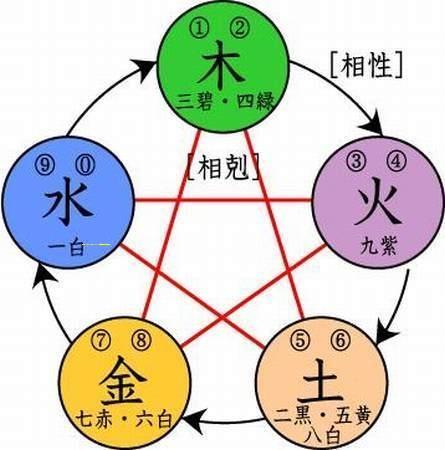怎样才能读好带有字的数学名字呢
- 作者: 杨唯希
- 来源: 投稿
- 2024-09-13
一、怎样才能读好带有字的数学名字呢
理解数学符号的含义了解数学符号所代表的数学概念,例如加号 (+)、减号 (-)、乘号 (×)、除号 (÷)。
熟悉数学术语,例如“变量”、“方程”、“函数”。
将数学符号与单词联系起来
将数学符号与它们所代表的单词联系起来,例如“+”表示“加”,“-”表示“减”。
练习阅读数学符号和单词的组合,例如“x + y”读作“x 加 y”。
使用上下文理解注意数学名字中的上下文,以帮助理解符号的含义。
考虑数学名字中其他单词和符号,它们可以提供线索。
练习阅读数学名字定期练习阅读带有数学符号的数学名字。
从简单的名字开始,逐渐增加复杂度。
尝试大声朗读数学名字,以提高理解力。
使用辅助工具使用数学字典或在线资源来查找数学符号的含义。
寻求老师或导师的帮助,以澄清任何困惑。
其他提示保持耐心和坚持不懈。理解数学符号需要时间和练习。
不要害怕犯错。错误是学习过程的一部分。
寻找有趣的或有意义的方式来练习阅读数学名字。
二、怎样才能读好带有字的数学名字呢英文
How to Pronounce Mathematical Names with Letters
1. Identify the letters: Determine which letters are present in the mathematical name.
2. Use the phonetic alphabet: Refer to the NATO phonetic alphabet to find the pronunciation of each letter. For example:
- A: Alpha
- B: Bravo
- C: Charlie
- D: Delta
- E: Echo
- F: Foxtrot
3. Combine the pronunciations: Concatenate the pronunciations of the individual letters to form the pronunciation of the mathematical name. For example:
- "sin" would be pronounced as "Sierra India November"
- "cos" would be pronounced as "Charlie Oscar Sierra"
4. Consider special cases: Some mathematical names have specific pronunciations that differ from the phonetic alphabet. For example:
- "pi" is pronounced as "pie"
- "e" is pronounced as "ee"
5. Practice: Repeat the pronunciation of the mathematical name several times to improve your fluency.
Examples:- sin(x): Sierra India November (x)
- cos(y): Charlie Oscar Sierra (y)
- tan(z): Tango Alpha November (z)
- log(a): Lima Oscar Golf (a)
- exp(b): Echo X-ray Papa (b)

三、怎样才能读好带有字的数学名字呢英语
How to Pronounce Mathematical Names with Letters
1. Identify the letters: Determine which letters are present in the mathematical name.
2. Use the phonetic alphabet: Refer to the International Phonetic Alphabet (IPA) to find the correct pronunciation for each letter.
3. Combine the sounds: Pronounce the letters in the correct order to form the mathematical name.
4. Stress the correct syllable: Some mathematical names have a stressed syllable. Identify the stressed syllable and emphasize it when pronouncing the name.
5. Consider the context: The pronunciation of a mathematical name may vary depending on the context in which it is used. For example, the letter "i" can be pronounced as "eye" or "ee" depending on the mathematical context.
Examples:Euler: Pronounced as "OY-ler"
Gauss: Pronounced as "GOWS"
Hilbert: Pronounced as "HILL-bert"
Lagrange: Pronounced as "lah-GRONJ"
Newton: Pronounced as "NEW-ton"
Tips:Practice pronouncing the names aloud to improve your fluency.
Listen to recordings of mathematicians pronouncing the names.
Consult mathematical dictionaries or online resources for guidance.
Be aware of any variations in pronunciation due to different accents or dialects.
四、关于数学的名字怎么取
数学名称的命名原则1. 反映概念或定理
例如:微积分(Calculus)、线性代数(Linear Algebra)、拓扑学(Topology)
2. 纪念数学家例如:欧几里得几何(Euclidean Geometry)、毕达哥拉斯定理(Pythagorean Theorem)、拉格朗日乘数法(Lagrange Multipliers)
3. 描述数学对象的性质
例如:奇数(Odd Number)、素数(Prime Number)、复数(Complex Number)
4. 使用缩写或首字母缩写
例如:微分方程(Differential Equations,缩写为 DE)、概率论(Probability Theory,缩写为 PT)
5. 借用其他学科的术语
例如:群论(Group Theory,借用自群论)、环论(Ring Theory,借用自环论)
6. 使用比喻或隐喻例如:微积分(Calculus,意为“小石头”)、拓扑学(Topology,意为“位置”)
7. 遵循历史惯例例如:三角学(Trigonometry)、代数(Algebra)、几何(Geometry)
数学名称的具体建议简洁明了:名称应简短易记,避免使用冗长的术语。
准确描述:名称应准确反映数学概念或定理的本质。
避免歧义:名称应避免与其他数学概念混淆。
考虑历史背景:如果可能,考虑数学名称的历史背景和演变。
征求反馈:在确定名称之前,征求其他数学家的反馈。
示例微积分:描述了微小变化的数学分支。
线性代数:研究线性方程组和向量空间的数学分支。
拓扑学:研究数学空间的性质,如连续性、连通性和紧凑性。
欧几里得几何:以古希腊数学家欧几里得命名的几何学分支。
毕达哥拉斯定理:以古希腊数学家毕达哥拉斯命名的定理,描述了直角三角形中各边的关系。




